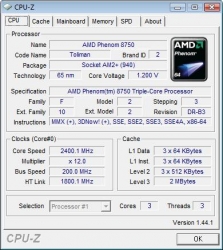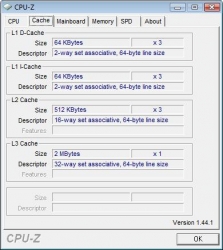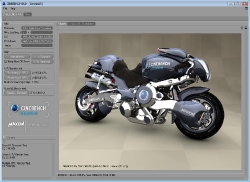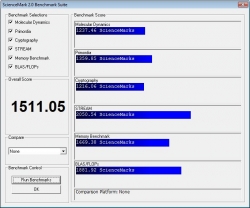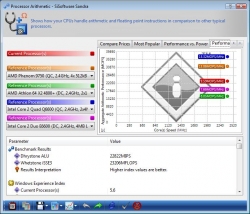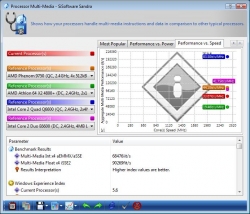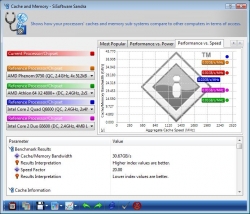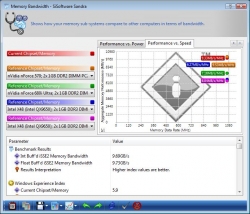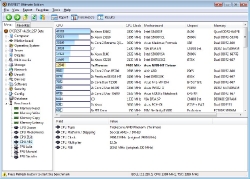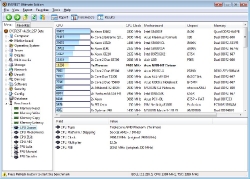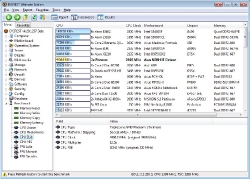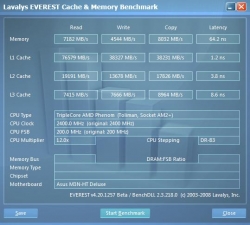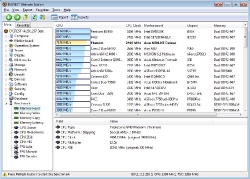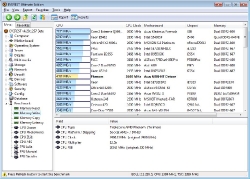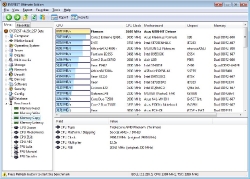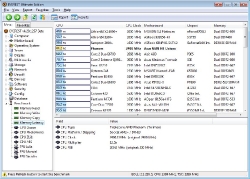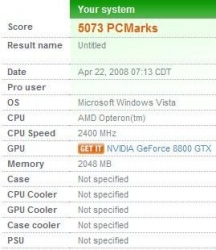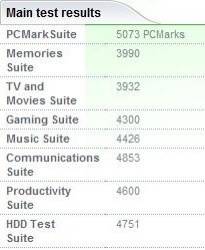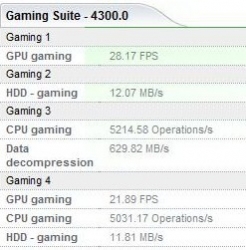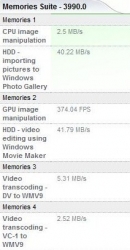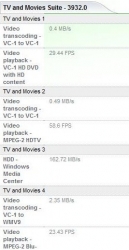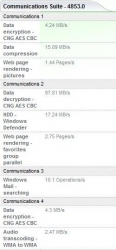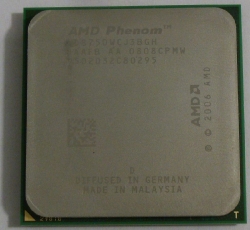Introduction:
Today, AMD launched three new 50-series Phenom X3 triple-core processors, these will range in speeds from 2.1GHz to 2.4GHs. The new 50-series Phenom X3 processors are also free of the TLB erratum that was present in the previous revision of the silicon as are all of the Phenom processors in the XX50 series.
The new Phenom X3 processors can be found priced between $145 and $195 depending on the particular model purchased. The three models being released are the 8450 (2.1GHz, $145), 8650 (2.3GHz, $165), and the 8750 (2.4GHz, $195). Since the new Phenom X3’s will be priced below the X4 lineup and has a max TDP of 95W, they are a good compliment to the new AMD 780G platform, seen in our recent review of the Asus M3A78-EMH HDMI.

Specifications:
AMD Phenom X3 8000-series processor:
Processor Model / Frequency: X3 8750 / 2.4GHz
Processor Model / Frequency: X3 8650 / 2.3GHz
Processor Model / Frequency: X3 8450 / 2.1GHz
L1 Cache Sizes: 64K of L1 instruction and 64K of L1 data cache per core (512KB total L1 per processor)
L2 Cache Sizes: 512KB of L2 data cache per core (1.5MB total L2 per processor)
L3 Cache Size: 2MB (shared)
Memory Controller Type: Integrated 128-bit wide memory controller (configurable for dual 64-bit channels for simultaneous read/writes)
Memory Controller Speed: Up to 1.8GHz with Dual Dynamic Power Management
Types of Memory Supported: Support for unregistered DIMMs up to PC2 8500 (DDR2-1066MHz)
HyperTransport 3.0: One 16-bit/16-bit link @ up to 3.6GHz full duplex (2.0GHz x2)
Total Processor Bandwidth: Up to 31.5 GB/s bandwidth
Packaging: Socket AM2+ 940-pin organic micro pin grid array (micro-PGA)
Fab location: AMD’s Fab 36 wafer fabrication facilities in Dresden, Germany
Process Technology: 65-nanometer DSL SOI (silicon-on-insulator) technology
Approximate Transistor count: ~ 450 million (65nm)
Approximate Die Size: 285 mm2 (65nm)
Max Ambient Case Temp: 70 degrees Celsius
Nominal Voltage: 1.05-1.25 Volts
Max TDP: 95 Watts
As you can see the 8750 is essentially the more cost effecient sibling to the 9XXX series Phenom processors while running cooler due to running one less core. AMD has additionally reduced the HT speed from 2.0GHz to 1.8 on the triple core processors which may be an effort to avoid an internal CPU war between Phenom X4 and X3’s. Additional differences include the L2 cache which is 1.5MB total as opposed to 2MB on the X4’s which is reflective of the disabled 4th core.
A Closer Look:
Architecturally the AMD Phenom X3 processors are identical to the Phenom X4 CPU’s. Some of you maybe wondering how since X4’s are quad core while the X3 is a triple core, shouldn’t there be one less core? The simple answer is that all triple core processors are quad-core X4’s with one of the cores disabled.
The reason for disabling this 4th core could be for a number of reasons but more than likley it is AMD’s way of releasing a product instead of discarding it. During the manufacturing process each CPU goes through a strenuous testing phase where they test speed, stability, operating voltage, and temperature among other things. If during this process one of the four cores fails then instead of throwing that processor away, it is possible that they simply disable that one core, and sell it as a X3 processor. This is good for both the consumer and the manufacturer, because this saves the manufacturer from throwing away these processor and allows them to sell them much cheaper saving the customer money.
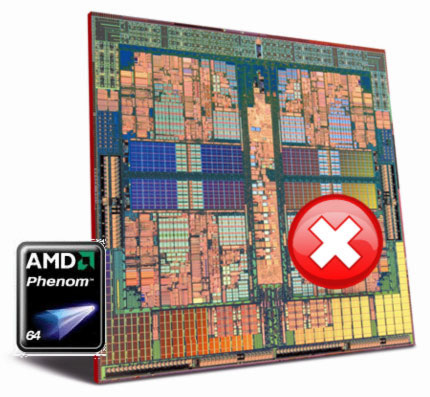
CPU-Z:
Below are two pictures that show information about the new AMD Phenom X3 8750. As seen below the AMD Phenom X3 8750 uses the new B3 revision which eliminates the TLB effect described in our Phenom 9600BE review. The 8750, codename Toliman, uses socket AM2+ with a max TDP of 95watts. Has a default core voltage at 1.2V to power the 2400MHz core speed. Each core has 128KBs of L1 cache and 512KBs of L2, with a shared 2MBs of L3 cache. Also being part of AMD’s phenom line, its HT Link is pumped up to 1800MHz.
The Triple Core Market:
Before we dive into benchmarks we need to discuss the focus for triple core and the market this product is aimed at. Both AMD and Intel have dual core CPU’s, each also has quad core CPU’s and each targets both the budget and high end markets. AMD officially now has the only triple core CPU on the market filling a very unique and interesting need that will appeal to many of you that may have not even realized the need for such a product.
The benefits of dual core CPU’s have been discussed at length and it is an accepted fact that these processors do well in multi-threaded applications and environments. They assist users greatly with multitasking and have additional benefits as well. This philosophy extends itself to the quad core market where the benefits to gaming, office applications, and multi-threaded programs nearly doubles that of a dual core processor. The price difference between the dual and quad core processor often stops many consumers from this significant upgrade.
As mentioned earlier the triple core will be released to the market starting at a price between $145 and $195. Currently Intel does not offer any quad core processors in this range, add to this the fact that you must pair the processor with a platform and you pad the price by another $150 to 200. The lowest priced intel quad core, the Q6600 also operating at 2.4Ghz is priced approximately $40 higher than the triple core Phenom 8750. The cheapest X38 chipset Intel motherboards start at $200 giving you a combined outlay of $435 for just a processor an motherboard and we haven’t even added in a video card to this system yet.
On the AMD side you have the 8750 which is the most expensive AMD triple core part, not the cheapest and is priced at $195. Pair the 8750 with the latest 780G AMD platform which starts at $80 and you have a combined outlay of only $275 and the 780G comes with built in 3200HD video. The difference between the Intel platform and the AMD platform comes to $160 which will afford you a very nice video card. Add in an approximately $50 ATI HD 3450 and you even have yourself a cross fire setup and an extra $110 for extra upgrades and your still cheaper than the Intel setup.
Think sub $500 complete PC here and you start to see the value of the triple core CPU’s from AMD. Now while this won’t appeal to many of you high end enthusiast’s it will appeal to OEM’s, system integrators, most small IT and computer retailers looking to offer a good performance PC with ton’s of extra’s for a low price. Most consumers buy with price in mind and the triple core AMD offers consumers and businesses a path towards greater multiprocessing at a lower price and higher performance than the equivilant dual core Intel processor.
We expect that the triple core CPU’s will be very popular once you compare them against the appropriate competition and take into consideration that AMD has not targeted them as high end CPU’s. These are as appropriate for your local Best Buy and Circuit City as they are your local small computer store offering custom computers. The finished Intel based PC could cost upwards of $1000 while it’s entirely possible to see a complete AMD based around a triple core for $500 to 600 or less.
With this in mind let’s see how the 8750 Triple Core performs.
Test System:
|
Processor: Motherboard: Memory: Graphics Card: Hard Drive: Power Supply: |
AMD Phenom X3 8750
Asus M3N-HT Deluxe Corsair Ballistix DDR2-1066 NVidia 8800GTX (driver v169.25) Raid 0 (2x 320 Seagate HD) Antec True Power Quattro 850 |
All tests were performed using Windows Vista Ultimate 32bit.
Cinebench R10:
When I first saw the results above I was rather surprised. A few days ago when I was benchmarking Asus’ new M3A-78 EMH HDMI motherboard with the Phenom X4 9600, the scores were 1812(Single Core) and 5292(Quad Core). Understandable the Phenom 9600 is clocked at 2.3 and the Phenom X3 is clocked at 2.4 which is why the single core performance is outperforming the Phenom X4 9600. The remainder of the difference is due to the difference in video card for this test.
Science Mark 2.0:
Science Mark uses multiple benchmarking processes to get an overall idea of how the processor will perform in the real-world. Overall Science Mark gave the AMD Phenom X3 8750 1511.05 points.
WinRaR:
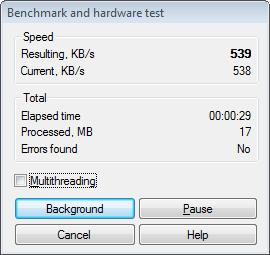
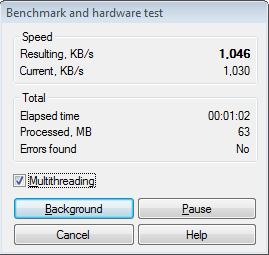
Winrar’s internal benchmark utility shows what the real time speed in KB/s that would be when using both single-thread and multi-threaded tasks. The processor speed up seems to be slightly lower than double, this may be a result of winrar not recognizing the new triple core processors yet.
SiSoftware Sandra XII:
Shown in the following four thumbnails below are different tests performed by SiSoft Sandra. Theses tests (in order of pictures) include Processor Arithmetic, Processor Multi-Media, Memory Bandwidth, and Cache and Memory. The other four processors chosen to be compared against the 8750 are AMD and Intel’s 2.4Ghz Dual and Quad Core processors. These would be Intel’s C2Q Q6600 and C2D E6600, and AMD’s Phenom X4 9700 and AMD Athlon 64 X2 4800+.
As seen in the results above, the AMD Phenom X3 8750 out performed the Intel C2D E6600 in every test. On average the 8750 received midway between the C2D E6600 and the AMD Phenom X4 9700 on every test. Consider once again that the triple core Phenom 8750 is priced at or below each of the processors in this lineup with the exception of the 4800+. The only processors to best its score were the quad core processors costing much more.
Everest Ultimate:
Shown in the following three pictures are benchmarks results taken form Everest Ultimate. The first three are using CPU Queen, CPU AES, and CPU ZLib tests. These benchmark the processor itself in several different ways. Each benchmark shows the AMD Phenom outperforming the C2D E6700.
The next five pictures show the rate in which the different levels of cache are written to and read from. Not only does it benchmark its read and write times, but also how fast it copies and the latency of the memory as well.
PC Mark Vantage:
Below you can see the results of the overall benchmark of PC Mark. For more detailed information on the test click on the smaller pictures below.
Overall the system scored 5073,which is very good once again considering this is a budget processor.
3D Mark 06:
Shown below is the result from 3D Mark 06. As you can see the graphics card used really helps with improving the score. Al thought the score of 2685 isn’t bad for just the CPU score. 10,000+ 3DMark06 score from a system that would be sub $700 to assemble is quite good.

Gaming:
We used the triple core Phenom 8750 as the heart of our system to play a few of the more popular games available today. The games consisted of Doom 3, Half Life 2 Episode 2, and Crysis.
Doom3: For Doom 3, we scaled all settings to the maximum with 16x AA and the resolution to 1280×1024. We achieved 40.0FPS, which is playable with very intense and high quality graphics.
Half Life 2 Episode 2: For HL2E2 we adjusted all settings to their maximum with 16xQ CSAA, 16x Antistrophic and a resolution of 1280×1024. With these settings we achieved 64.01 average FPS. At those framerates the game was perfectly playable.
Crysis: For Crysis, we set it to Medium with no AA and a resolution of 1280×1024. At these settings we got 28.7 FPS which is still considered playable and pretty good results.
Power Consumption:
The Phenom 8750 while edging out the comparable E6600 and E6700 in many tests also has an edge in overall power consumption. This is due to an overall lower power consumption per core and also the platform in which it is used. Compare the numbers below:
|
System
|
Overall Power Consumption
|
| AMD Phenom 8750 |
Idle: 221 Load: 315
|
| Intel Q6600 |
Idle: 234 Load: 352
|
While this may not seem like it impacts you, wait till you check your power bill.
Conclusion:
As you have seen on the previous pages of benchmarks, the AMD Phenom X3 8750 perform outstandingly. Compared to Intel’s Core 2 Duo E6600 which is priced at $230, $45 more than the Phenom X3, the performance is outstanding for its price. Being aimed for low cost computing, the phenom X3 teamed up with AMD’s new 780G chipset makes it possible to build a high performance low cost machine.
A good example of what we mean would be to compare the best I. G. platform for entry-level PCs ($500 system price) from Intel and AMD. For $360, you get the foundation of Intel’s latest G35 integrated graphics platform and a reasonable dual-core solution… Asus’ Asus P5E-VM HDMI ($130) and the 2.4GHz C2D E6600. But for only $290, you could get AMD’s latest 780G integrated graphics ($90 Asus M3A-78 EMH HDMI) platform and an equally-clocked 2.4GHz Phenom X3 triple core ($195). We know how AMD 780G compares to Intel’s G35 in gaming and Blu-ray playback, and you also get the benefit of a multi-core CPU. (“780G and a core for free”). If you go with a less expensive AMD 780G motherboard, you will save enough to add a Radeon HD 3450 GPU into that configuration and get ATI Hybrid Graphics Technology and still be cheaper that the Intel integrated graphics setup.

